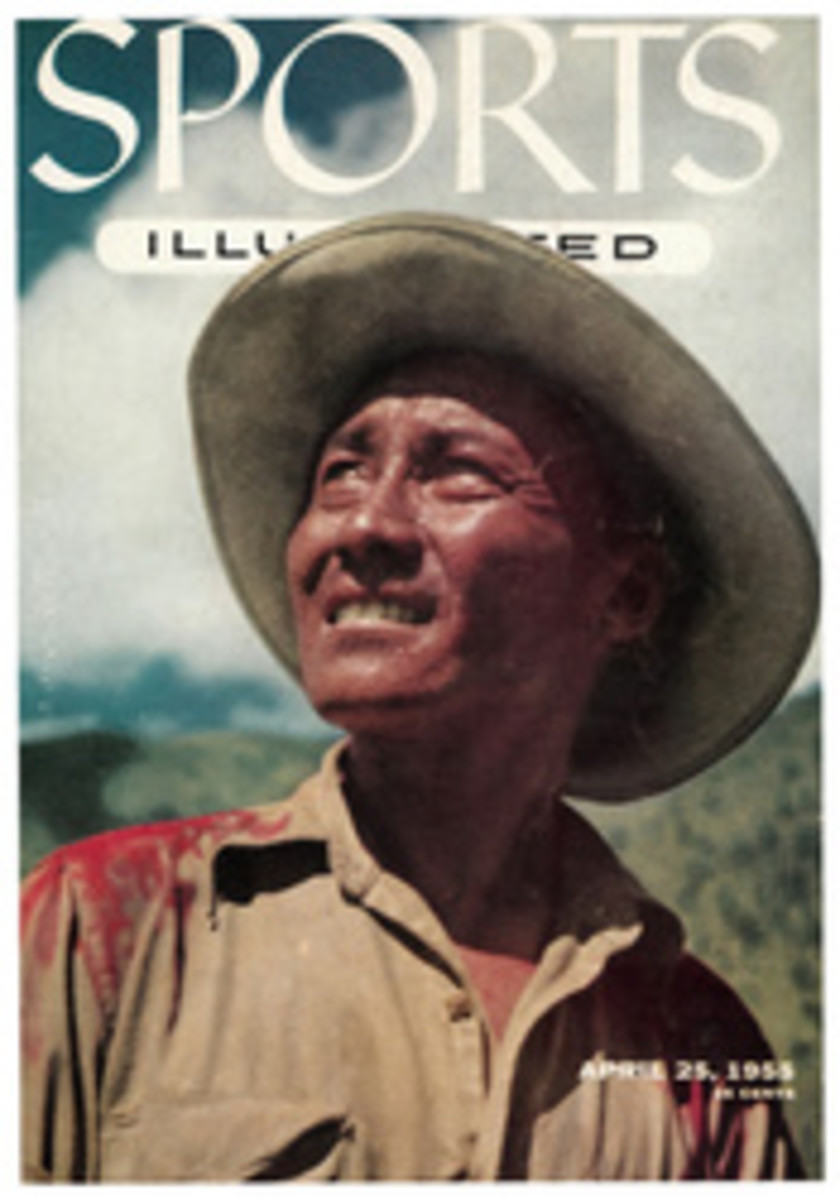
DUCKS, ETC.
During the next week or two most duckpin leagues will end their schedules, and the National Duck Pin Bowling Congress will draw up new country-wide rankings on a basis of season averages, as it has done for 27 years. But whoever is ranked No. 1 might well be overshadowed by Frank Micalizzi, the 5-foot 4-inch government engineer from Silver Spring, Md. who won the first All-Star duckpin match game championship last month. The 40-game All-Star, sponsored by the Bowling Proprietors Association of America and the NDBPC, is the sternest duckpin championship test—certainly more exacting than the current 9-game national championship at Pawtucket—and its future winners probably will be recognized as U.S. title-holders. And this may be as good a time as any to answer some of the interested, instructive and irate readers who flooded the 19TH HOLE with letters, following a column on small-pins (SI, Feb. 28) in which I mentioned that 134 was the highest season average ever attained by a duckpin bowler.
NEARLY TWO MILLION
There are an estimated 8 million organized bowlers in the U.S.—that is to say, members of leagues and clubs with regular schedules, whether or not affiliated with a bowling association. More than 6 million bowl big-pins under American Bowling Congress rules stipulating the use of 15-inch pins (4 49/64 inches at their widest point) and balls weighing up to 16 pounds. The remaining 1.7 million or so are small-ball enthusiasts who roll various games.
By far the largest group of small-ball bowlers, some 1,250,000, follow the regulations of the NDPBC and roll against pins 9 13/32 inches tall (4‚⅛ inches at their widest point) with balls of a maximum 5-inch diameter and weighing 3 pounds 12 ounces. Since the pins, as in the big-pin game, are set up in a 36-inch triangle—on alleys of virtually the same dimensions—it is naturally harder to knock them down, and scores are lower even though three balls are permitted in a frame instead of two. BPAA Tournament Director Sylvester Sobanski, in applying the Petersen point system to the All-Star, figured that 30 pins in ducks was equal to 50 in big-pins. On this basis Micalizzi, who averaged 129-18 for the 24-game finals, scored the equivalent of 215 plus in the big-pin game.
To give you an idea of where duckpin bowlers chiefly congregate in the U.S., the 32 All-Star qualifiers included eight from each of Connecticut and Washington, D.C., four from Rhode Island, western Pennsylvania and Georgia and two from North Carolina and Virginia. Another hotbed of the sport, Maryland, was not represented because the Baltimore proprietors withdrew from the national assocation.
Affiliated with the duckpin organization is the American Rubberband Duckpin Bowling Congress, which has about 50,000 devotees in Pennsylvania and perhaps as many in Montreal. These bowlers use the same size ball and same height pins, but the pins have a five-eighths-inch thick strip of rubber around the belly, giving them more "scramble" than ordinary ducks. Only two balls are rolled in a frame, yet averages in the 170s are fairly common. Whereas 239 was the highest score ever recorded in ducks, 12 perfect 300s have been registered in rubber duckpin leagues.
Of the four rubber duckpin bowlers who qualified for the All-Star, only one—William Schaffalo, 47, a steelworker of Aliquippa, Pa.—managed to reach the final eight, and he provided little threat to the leaders. It was interesting to note, however, that Schaffalo rolled with the approximate speed and motion of a big-pin star and was more accurate than the others on one-and two-pin spares.
Not as large a group as the duckpinners, but larger than the rubber ducks clan, are the candlepin bowlers who compete under the aegis of the Massachusetts Bowling Association. Since candlepins (the same height as big-pins but narrower) will be the subject of a future column, it will suffice to say now that New England from Boston north is solid candlepin territory, that candlepins is also a three-ball-a-frame game and that scoring is tougher even than in duckpins.
All of these games have one thing in common: they present a challenge to the competitive courage, skill and luck of the bowler. In the All-Star, for instance, slight, dark Micalizzi, who had led the field from the second of the 24-game finals, went into the last three-game block with what appeared to be a comfortable margin over Robert Lockhart of Arlington. In the first game of the block, however, Lockhart rolled a sparkling 161 to take a fingertip hold on first place. Many might have folded in such a situation, but Micalizzi, national doubles champion in 1948 and a member of the 1950 championship team, came back with 128-96 and 124-113 victories for the title. Lockhart dropped to third behind Richard Alkas of Bristol, Conn., who put on a terrific finish only to fall 1.3 Petersen points (or 33 pins) short of triumph. Alkas had the highest pinfall—3,171 to Micalizzi's 3,114—but, like Don Carter in the All-Star, could not get them when he needed them most—to win close games.
PHOTO
FRANK MICALIZZI

